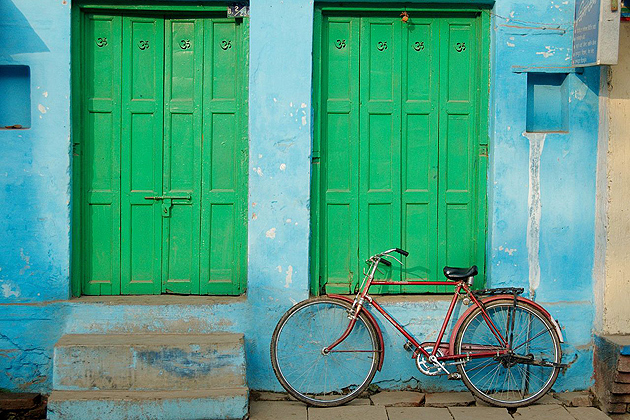
In American culture, acquiring wheels empowers a person, as any 16-year-old eager for a driver’s license knows.
That principle is being applied in rural India, where the wheels are bicycles and the people empowered are 14-year-old girls. Bicycles are used as an incentive to encourage them to stay in school. A UConn economist is analyzing whether this works.
Nishith Prakash, who recently came to UConn as an assistant professor of economics and human rights, and a colleague at the University of California, San Diego, Karthik Muralidharan, studied the effects of a bicycle incentive used at schools in Bihar, India. Their research was funded by the International Growth Centre, an institute directed by the London School of Economics and Oxford University.
The bike giveaway began in 2007, after a new government came into power in Bihar, an agricultural state in northeastern India that lags in development. Too many girls there were dropping out of school after the end of grade 8. Rural girls often have other duties, such as caring for siblings and the family household. Their parents were, in effect, doing a cost-benefit analysis and sending only their boys to high school, says Prakash.
By giving bicycles to the girls, the government of Bihar has spent millions of dollars to achieve several goals. It wants to improve high school enrollment rates, reduce a gender gap that leaves girls behind, and improve learning.
The project aims to fulfill a United Nations Millennium Development Goal of improving women’s access to secondary education. The chief minister of the state in Behar also wanted to empower girls, who could use the bicycles after school to visit their friends.
The question that the economists were asked to look at was, does the incentive work?
Prakash and Muralidharan used a three-step “difference-in-difference-in difference” technique to isolate the effect of bikes on enrollment and remove biases in their findings that could come from other factors. First they studied the difference in girls’ enrollment levels before and after the policy change. They also looked at how girls’ enrollment compared with boys’ enrollment before and after the bike incentive. And third, they considered the difference in enrollment trends by gender in a neighboring state, Jharkhand, where students did not receive bicycles.
They found that girls in Bihar have stayed in school longer since the bicycle incentive began. Their estimates suggest that the gender gap in enrollment and attainment has been bridged by 10 percent to 20 percent.
Now the economists will use GPS data to look at how distance determines whether girls stay in school or drop out. Are girls farther away from school more likely to leave?
“We believe it’s the distance that has an impact, not just the bike,” says Prakash.
While bicycle incentives are used elsewhere in India, Bihar’s bikes are available to all girls who enroll in grade 9. In some other states, bikes have been given only to girls in the disadvantaged castes. The girls in Bihar were aware of that and were pleased that all girls in Bihar got to participate, Prakash says.
Their families also like the program. Bikes can cost more than $50, a considerable sum in this rural area. Because of its success, the program was extended in 2011 to include boys. Any further study he does on how girls are affected will have to use data from 2010 or earlier, Prakash says.
The International Growth Centre created this video about the project.
A paper by Prakash and Priya Ranjan of the University of California at Irvine about incentives to keep students in India in school was cited in The Times of India.


